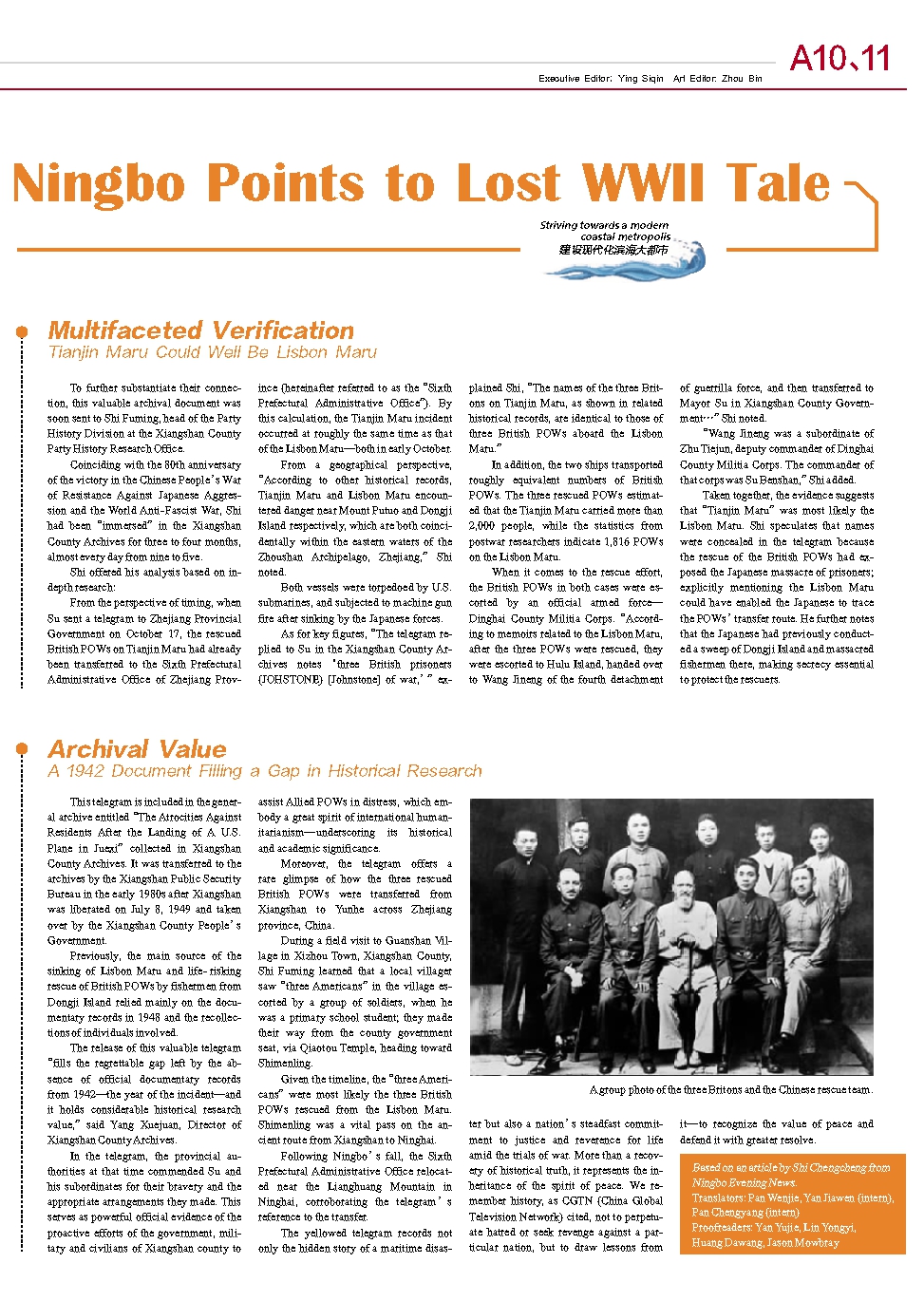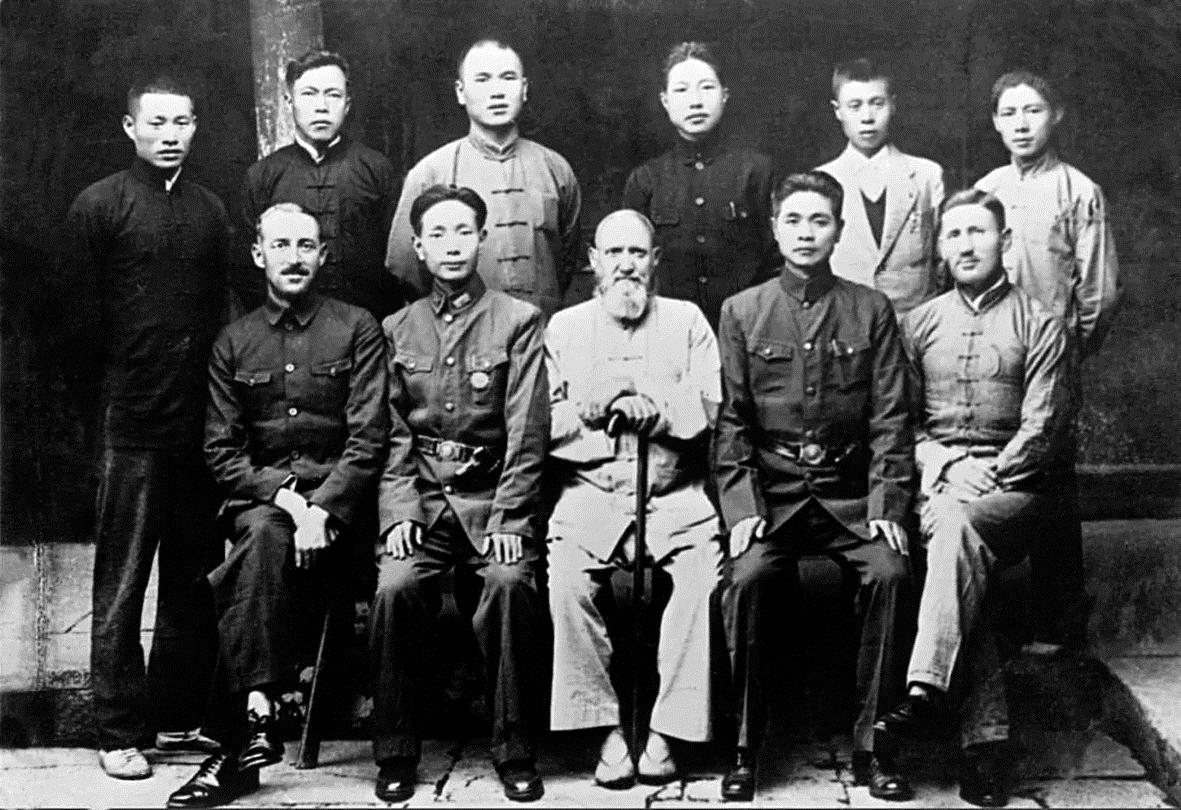This telegram is included in the general archive entitled “The Atrocities Against Residents After the Landing of A U.S. Plane in Juexi” collected in Xiangshan County Archives. It was transferred to the archives by the Xiangshan Public Security Bureau in the early 1980s after Xiangshan was liberated on July 8, 1949 and taken over by the Xiangshan County People’s Government.
Previously, the main source of the sinking of Lisbon Maru and life-risking rescue of British POWs by fishermen from Dongji Island relied mainly on the documentary records in 1948 and the recollections of individuals involved.
The release of this valuable telegram “fills the regrettable gap left by the absence of official documentary records from 1942—the year of the incident—and it holds considerable historical research value,” said Yang Xuejuan, Director of Xiangshan County Archives.
In the telegram, the provincial authorities at that time commended Su and his subordinates for their bravery and the appropriate arrangements they made. This serves as powerful official evidence of the proactive efforts of the government, military and civilians of Xiangshan county to assist Allied POWs in distress, which embody a great spirit of international humanitarianism—underscoring its historical and academic significance.
Moreover, the telegram offers a rare glimpse of how the three rescued British POWs were transferred from Xiangshan to Yunhe across Zhejiang province, China.
During a field visit to Guanshan Village in Xizhou Town, Xiangshan County, Shi Fuming learned that a local villager saw “three Americans” in the village escorted by a group of soldiers, when he was a primary school student; they made their way from the county government seat, via Qiaotou Temple, heading toward Shimenling.
Given the timeline, the “three Americans” were most likely the three British POWs rescued from the Lisbon Maru. Shimenling was a vital pass on the ancient route from Xiangshan to Ninghai.
Following Ningbo’s fall, the Sixth Prefectural Administrative Office relocated near the Lianghuang Mountain in Ninghai, corroborating the telegram’s reference to the transfer.
The yellowed telegram records not only the hidden story of a maritime disaster but also a nation’s steadfast commitment to justice and reverence for life amid the trials of war. More than a recovery of historical truth, it represents the inheritance of the spirit of peace. We remember history, as CGTN (China Global Television Network) cited, not to perpetuate hatred or seek revenge against a particular nation, but to draw lessons from it—to recognize the value of peace and defend it with greater resolve.
Based on an article by Shi Chengcheng from
Ningbo Evening News.
Translators: Pan Wenjie, Yan Jiawen (intern),
Pan Chengyang (intern)
Proofreaders: Yan Yujie, Lin Yongyi,
Huang Dawang, Jason Mowbray



